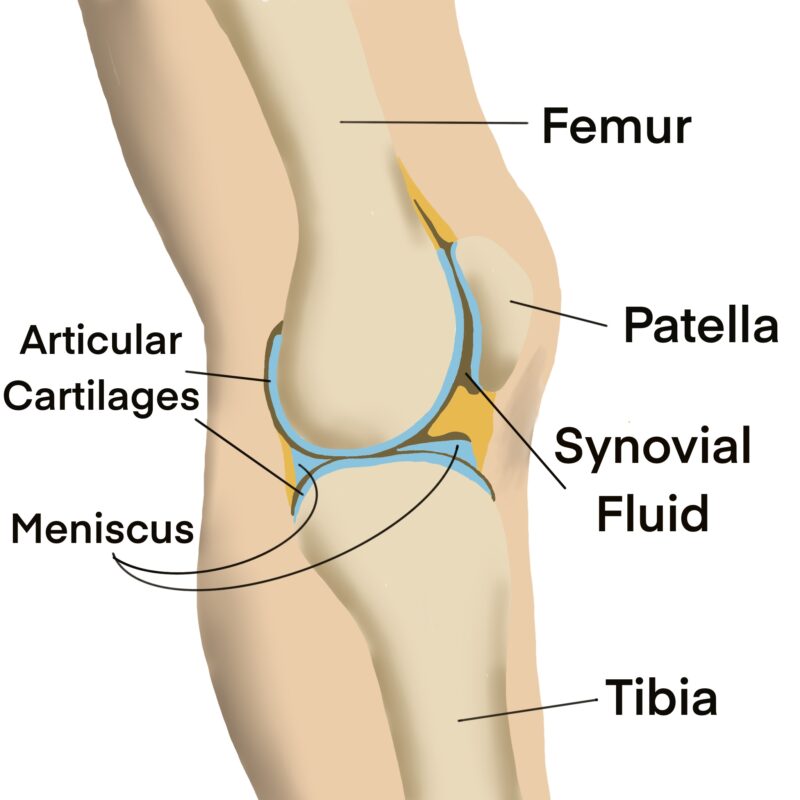Acupuncture can address knee pain. One of the common reasons for knee pain is osteoarthritis of the knee joint. Osteoarthritis is defined as “a degenerative joint disease, in which the tissues in the joint break down over time” by NIH. It is the most common knee problem that I encounter, and it could also be one of the most difficult cases to treat with acupuncture.
The knee joint connects the femur, tibia, and patella. In order to provide shock absorbent between them, our ingenious body design provides us cartilages on the articulating ends of the bones. For additional protection, we have menisci between the femur and tibia.

When we experience trauma or natural wear and tear, the cartilages start to show signs of degeneration. In a healthy knee joint, there should be 3-4 mm of cartilages on the bones. The inside of the knee joint is filled with nutrient-rich synovial fluid. Microtrauma to the cartilages is continuously repaired because of the synovial fluid.
However, there are no blood vessels, lymphatic systems, or nerves present in the cartilages. This makes it difficult for the knee cartilages to heal themselves when the damage is more than a microtrauma. Without these structures, there is no way of transporting the building blocks and nutrients necessary for major tissue repair from the outside of the knee joint.
Over time, cartilages start to wrinkle and eventually detach from the bones.
When the knee is “bone on bone”, a knee replacement is your best option. However, acupuncture can provide pain relief before the knee gets to the point. Also, acupuncture may delay the inevitable knee replacement.
When it comes to the perception of knee pain and physical discomfort, the signals are sent to the brain from the two-layered structure called the articular capsule which literally encapsulates the knee joint. Also, surrounding muscles, ligaments, and tendons play key roles in causing pain and discomfort. Unlike cartilages, the articular capsules and the surrounding structures are highly innervated, and these are where acupuncture can provide pain relief.
*Individual results may vary.

